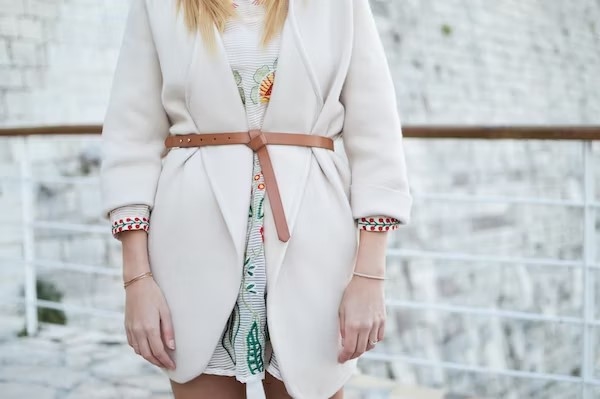Fashion, as a form of self-expression, is ever-evolving, reflecting the spirit of the times while preserving the cultural heritage that shapes it. In the dynamic realm of style, the concept of “Style Fusion” emerges as a bridge between tradition and modernity, blending the rich tapestry of heritage with the fluidity of contemporary trends. This article explores how designers and fashion enthusiasts are navigating this delicate balance, creating a unique and inclusive space where diverse influences coalesce to redefine the fashion landscape.
Heritage as a Source of Inspiration:
Heritage serves as a wellspring of inspiration for designers seeking to infuse their creations with a sense of history and cultural identity. Traditional craftsmanship, textiles, and motifs find new life in the hands of visionary designers who skillfully merge the old and the new. By drawing from their cultural roots, designers pay homage to the craftsmanship of the past while reinterpreting it through a modern lens.
For example, Indian designers might incorporate intricate hand-embroidery techniques, such as zardozi or kantha, into contemporary silhouettes, creating garments that exude both tradition and trendiness. Similarly, African designers might use vibrant, indigenous prints to craft modern clothing that resonates with a global audience. In this way, heritage becomes a catalyst for innovation, fostering a fashion narrative that transcends borders.
Cultural Diversity on the Runway:
One of the striking manifestations of style fusion is the celebration of cultural diversity on the global fashion runway. Designers are increasingly exploring diverse aesthetics, drawing inspiration from a multitude of cultures to create collections that reflect the beauty of our interconnected world. This trend not only breaks away from the Eurocentric norms that dominated fashion for decades but also highlights the richness of global heritage.
Fashion weeks in major cities have become showcases for cultural diversity, featuring designers from various backgrounds who bring their unique perspectives to the forefront. Runway shows become visual symphonies where traditional textiles, embellishments, and silhouettes harmonize with contemporary designs, creating a tapestry that tells a story of cultural cross-pollination.
Modern Revival of Traditional Textiles:
Traditional textiles, often laden with centuries-old stories, are experiencing a renaissance in the world of fashion. From Japanese kimono silk to Peruvian alpaca wool, designers are incorporating these heritage fabrics into their collections, giving them a contemporary twist. The juxtaposition of age-old weaves with modern cuts and designs creates a harmonious blend of the classic and the current.
Artisans and weavers are playing a crucial role in this style fusion, preserving traditional techniques and ensuring the sustainability of craftsmanship. The revival of interest in traditional textiles not only contributes to the preservation of cultural heritage but also fosters a deeper appreciation for the artistry and labor invested in creating these timeless fabrics.
Contemporary Adaptations of Traditional Silhouettes:
Traditional silhouettes, rooted in the clothing traditions of various cultures, are undergoing dynamic transformations in the hands of contemporary designers. The fusion of classic shapes with modern aesthetics results in garments that are both culturally resonant and fashion-forward. The kimono, for instance, might inspire a sleek, minimalist jacket design, while the sari’s draping technique could inform the construction of a modern evening gown.
This interplay between heritage and contemporary design extends beyond specific garments, influencing the overall approach to fashion. Designers are exploring ways to integrate traditional clothing elements seamlessly into everyday wear, allowing individuals to carry a piece of their cultural identity with them in their daily attire.
Sustainable Fashion with Traditional Roots:
As sustainability becomes an increasingly integral aspect of fashion, designers are turning to traditional practices for inspiration. Ethical fashion often aligns with traditional craftsmanship, where artisans utilize eco-friendly materials and techniques handed down through generations. This convergence of sustainability and heritage not only reduces the environmental impact of fashion but also supports the livelihoods of artisan communities.
Designers are also repurposing vintage textiles and garments, giving them new life in contemporary creations. This commitment to sustainable practices fosters a sense of responsibility towards the environment while preserving the cultural heritage embedded in each piece.
The Role of Influencers and Street Style:
Style fusion is not confined to the runway; it flourishes on the streets and is propagated by fashion influencers who navigate seamlessly between heritage and contemporary trends. Street style, characterized by its diversity and individuality, often serves as a melting pot of fashion influences. Influencers incorporate traditional elements into their modern outfits, creating a visual dialogue that resonates with a global audience.
Social media platforms amplify the reach of these style influencers, allowing their fashion narratives to transcend geographical boundaries. The democratization of fashion through platforms like Instagram and Pinterest has empowered individuals to curate their own style fusion, celebrating their cultural heritage while embracing contemporary expressions.
Conclusion:
Style fusion emerges as a testament to the dynamic nature of fashion, where the old and the new coexist in a harmonious dance of creativity. As designers draw inspiration from their heritage, celebrate cultural diversity, and revive traditional techniques, the fashion landscape becomes a vibrant tapestry of influences. Style fusion is not merely a trend but a celebration of individuality, cultural richness, and the continuous evolution of fashion. In this inclusive space, heritage and contemporary trends converge, creating a narrative that reflects the diverse and interconnected world of modern fashion.

